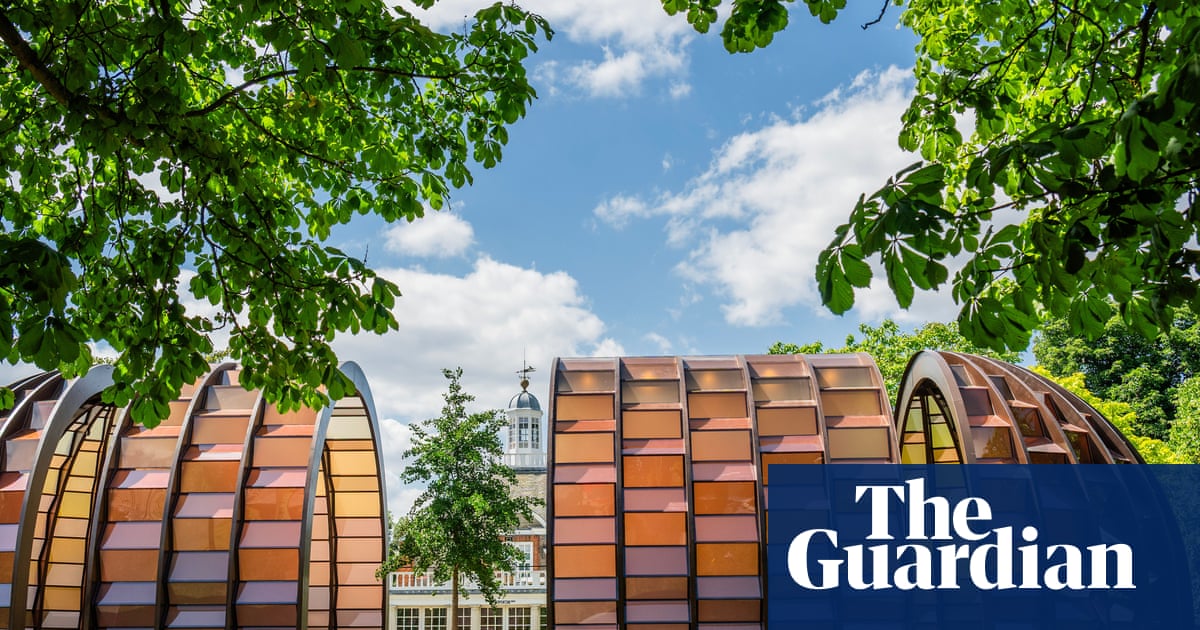Pavilions of the Future: Trends in Architecture and Design
The Serpentine Pavilion, a yearly architectural commission in London, offers a interesting glimpse into the future of design. This year’s structures, by Marina Tabassum and Peter Cook, highlight evolving trends in materials, sustainability, and the very purpose of public spaces. Let’s delve into what these pavilions, and the broader architectural landscape, tell us about the future.
Sustainability: Beyond the Buzzword
Sustainability is no longer a niche concern; it’s a essential design principle.The article points out the “carbon intensive” nature of some pavilion elements.Future pavilions, and indeed all architecture, will need to prioritize:
- Material Innovation: Expect to see more use of reclaimed materials, bio-based plastics, and innovative composites. Think mycelium bricks, bamboo structures, and recycled metal components.
- Lifecycle analysis: Architects will increasingly consider the entire lifecycle of a building, from sourcing materials to deconstruction and reuse.
- Energy Efficiency: Passive design strategies, such as natural ventilation and solar shading, will be integrated with smart technologies to minimize energy consumption.
Did you know? The global green building materials market is projected to reach $439.6 billion by 2028, according to a report by Grand View research.
The Rise of Modular and Adaptable Spaces
The article mentions the modular elegance of Tabassum’s work in Bangladesh. This points to a broader trend:
- Prefabrication: Modular construction techniques allow for faster build times,reduced waste,and greater design adaptability.
- Adaptability: Buildings will be designed to adapt to changing needs.This means flexible layouts, easily reconfigurable spaces, and the ability to accommodate different functions over time.
- Community Focus: Architects are increasingly designing spaces that foster community interaction, whether through public art installations, shared gardens, or flexible event spaces.
Pro Tip: Look for architects who prioritize adaptability and flexibility in their designs. This ensures your space can evolve with your needs.
The Intersection of Art, Play, and Public Space
Peter Cook’s “play pavilion” highlights the evolving role of public spaces. Future designs will:
- Blur the Lines: expect to see more integration of art, play, and functionality in public spaces.
- Embrace Technology: Interactive installations, augmented reality experiences, and smart city technologies will enhance the user experience.
- Prioritize Inclusivity: Designs will be created to be accessible to all, with a focus on creating welcoming and inclusive environments.
Reader Question: How can architects balance the need for innovation with the practicalities of cost and construction?
The Future of Materials: Experimentation and Innovation
The article notes the disappointment when “earth bricks result in blocks of wood.” The future of architecture will be defined by material innovation:
- Biomaterials: Expect to see more use of lasting materials like timber, bamboo, and even innovative materials like mycelium.
- Smart Materials: Materials that can respond to environmental conditions, such as self-healing concrete or self-cleaning surfaces, will become more common.
- Digital Fabrication: 3D printing and other digital fabrication techniques will allow for complex and customized designs.
Case Study: The “Floating Piers” installation by Christo and Jeanne-Claude, which used 100,000 square meters of shimmering yellow fabric, demonstrated the power of temporary, site-specific art to transform public spaces.
FAQ: Frequently Asked Questions
Q: What role will technology play in future pavilions?
A: Technology will be integrated to enhance user experience, improve energy efficiency, and enable innovative design solutions.
Q: How can we ensure that future pavilions are sustainable?
A: By prioritizing sustainable materials, lifecycle analysis, and energy-efficient design.
Q: What is the importance of adaptability in architectural design?
A: Adaptable designs allow buildings to evolve with changing needs, ensuring their longevity and relevance.
The serpentine Pavilion provides a valuable lens through which to view the future of architecture. By embracing sustainability,modularity,and innovative materials,architects can create spaces that are not only lovely but also functional,adaptable,and responsive to the needs of the community.
What are your thoughts on the future of architecture? Share your comments below!

